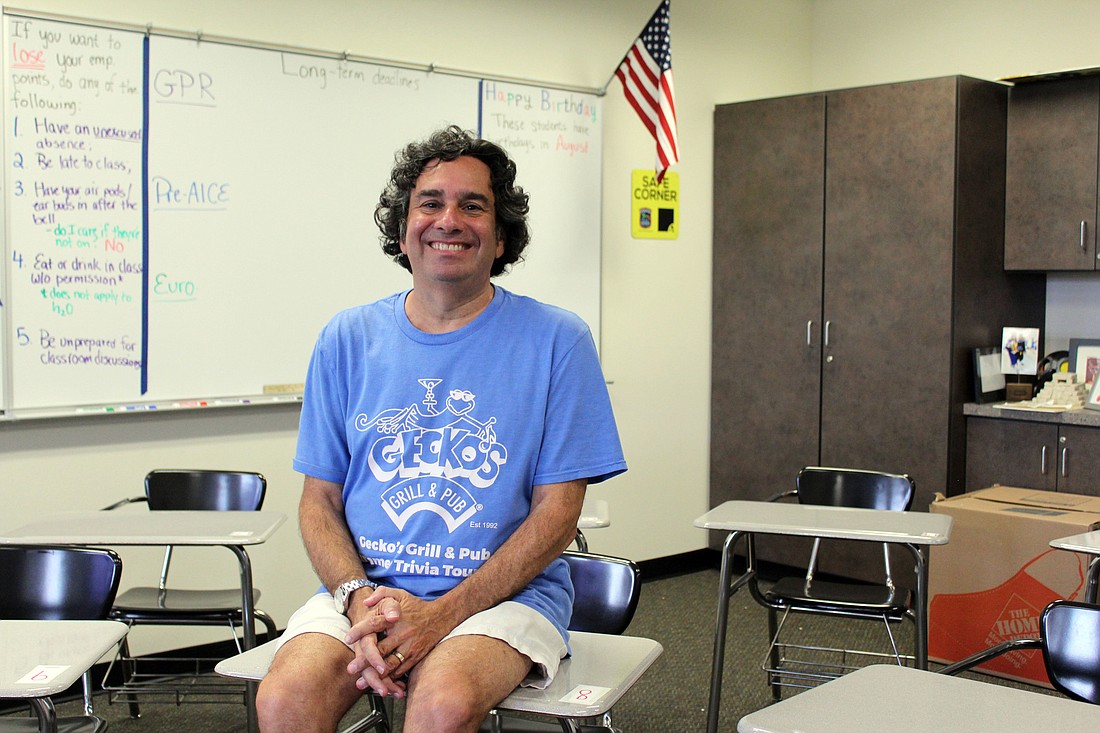- December 13, 2025
-
-
Loading

Loading

When a plane flew into floors 93-99 of the North Tower of the World Trade Center at 8:46 a.m., Lila Speciner was working on the 88th floor.
She was a paralegal for the Port Authority of New York and New Jersey. The percussion from the impact knocked her to the floor and immediately turned off all the lights in the building.
Once she regained equilibrium, she and her coworkers were able to crawl their way to a stairwell. There, she and another coworker helped an employee who was legally blind down all 88 flights of stairs.
They made it to the concourse under the tower when they felt a big blast of air — what they later learned was the tower collapsing. Eventually, they ran into an emergency worker who led them to safety before returning into the rubble.
Speciner then proceeded to walk more than three miles uptown to meet with her son Mark Speciner, who is now a social studies teacher at Booker High School.
Mark Speciner for the past several years has run a program on Sept. 11 where his students hear from his mother and gain firsthand knowledge of the day.
“I think that 9/11 was a seminal event in this country and that our lives are forever changed because of what happened,” Mark Speciner said. “It’s important to examine why we are where we are in this country, and some of that is directly traceable to what happened on that day.”
Speciner, and several other teachers throughout the Sarasota/Manatee area, say it’s important to teach students about the events of the day and how they’ve shaped our current reality, particularly as there is now a generation of students who weren’t alive on the day.
David Oness, a U.S. history teacher at Sarasota High School, said it used to be easy to start a discussion about 9/11 with his students because he could ask them what they remember from the day.
However, about five years ago, he got to the point where his students didn’t remember. Now, none of them were yet born.
“As time went on, the discussion shifted from the initial raw memories to looking at the bigger picture and how the event has impacted the way we live today,” Oness said.
Instead of discussions, Oness shares as many primary documents as he can with his students so they can get a clear picture of the day.
Bill Wallin, an AP World History teacher at Lakewood Ranch High School, shared his own experiences of where he was and what he was doing when the news of the attacks broke. He also encourages his students to speak to their parents to get their experiences.
“History teachers always stress using and finding primary sources, which is an eyewitness account,” Wallin said. “These students have plenty of eyewitnesses, plenty of primary sources who have experienced it for themselves and can share those experiences with them. It’s probably similar to when I used to talk to World War II veterans about Pearl Harbor and how much that changed our country.”
Wallin said sharing his experiences oftentimes feels surreal.
“It was a scary time, so to share with them what it was like to wonder if there was going to be a tomorrow or if there was going to be an economic collapse was surreal,” Wallin said. “Then there were the things that happened afterward like the anthrax scare and the (Washington) D.C. sniper, more terrorist incidents and then going into two wars that we’re just getting out of in the last couple years. Growing up, that’s my high school reality, and it’s like a continuation of that reality 20 years later and seeing how it’s grown, how it’s developed and how it’s become the new normal.”
Teachers said they go on to explain many facets of life that changed following the day: airline regulations, concrete barriers in front of many buildings, extra precautions at sporting events, the national shift in feelings toward foreign invasions and a surge in patriotism.
“Unfortunately, history tends to repeat itself and it’s important that kids are aware of what’s happened in the past so they can be on the lookout for what might be happening in the future,” Oness said.
Brian Kirchberg, an AP Government teacher at Braden River High School, uses the movie “Spider-Man,” which was released in 2002, to show the cultural impact 9/11 had.
“I’ll show them the trailer because in the trailer for “Spider-man” the twin towers are actually in it because the movie was filmed in early 2001 and then it didn’t come out until 2002,” Kirchberg said. “The parts that are in the trailer that involve the twin towers aren’t in the movie, so we’ll talk about the cultural impact of something like that at the same time. There’s a theme where they have all the New Yorkers kind of coming together and somebody says something like, ‘New Yorkers stick together.’ It was almost a patriotic moment after a big catastrophe.”
Last year, Kirchberg stood in front of his class during a school year unlike any other, he used the COVID-19 pandemic as a way for students to understand how an event can impact the world around them just as 9/11 did.
“The overarching concept is the idea that specific events once in a while can actually change the entire direction of the world,” Kirchberg said.